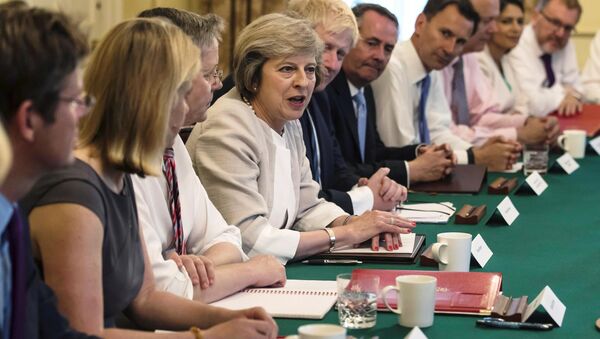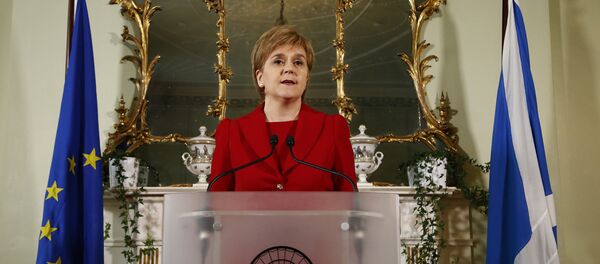May has her work cut out, following the historic referendum result, June 23, when Britain voted to leave the EU. The decision ended years of division within her own Conservative Party, but has clearly left those in her own government — including herself — who wanted to remain, dissatisfied.
Theresa May's first 3 days as PM: arriving in No10, calling @POTUS, meeting police officers & visiting @ScotGovFM pic.twitter.com/B0KVPwAwT5
— UK Prime Minister (@Number10gov) 16 July 2016
May was quick to pull together a cabinet made up of both those who voted for Brexit and those who did not, in an attempt to pull together the party, which has been riven with division ever since the signing of the Maastricht Treaty in 1992, which changed what had been the European Economic Community into the EU as it is today.
In a statement released ahead of the meeting, May said:
"Brexit means Brexit — and we're going to make a success of it. It will be the responsibility of everyone sitting around the cabinet table to make Brexit work for Britain. And it will also be their duty to deliver success on behalf of everyone in the UK, not just the privileged few. That is why social justice will be at the heart of my government."
May has tasked three Brexiteers — already being dubbed the Three Musketeers — to take Britain out of Europe. Party heavyweight — and former Europe minister — David Davis is Secretary of State for Exiting the European Union. He will have to works together with former London mayor Boris Johnson, who is Foreign Secretary. No negotiations can go on without the Secretary of State for International Trade, Liam Fox.
Met many EU counterparts one on one to discuss giving effect to EU vote — talks were positive & productive
— Boris Johnson (@BorisJohnson) 18 July 2016
May's Agenda
May's task is to deliver Brexit, while also dealing with the obvious issue of Scotland, where a majority voted to remain in the EU and First Minister Nicola Sturgeon has warned that a second referendum on Scottish independence from the UK could be called.
But May's other major issue is keeping her party together, having torn apart the remains of her predecessor David Cameron, who now sits outside cabinet on the backbenches of the House of Commons. By removing Cameron, his chancellor George Osborne and most of their pals in power, she has stamped her own authority on the party, but may have made enemies.
She only has a working majority of 16 and those who she has moved out of cabinet could cause trouble on sensitive issues. Many of those who voted to remain in the EU will point to the fact that — in the leadership campaign in which she emerged winner — all the other candidates dropped out.
May's mission must be to reforge Unionism as well as Conservatism https://t.co/xCcjuUCmCs
— ConservativeHome (@ConHome) 18 July 2016
It meant that the leadership contest never went to a full vote of grassroots members. She won by default. Those grumbling on the backbenches may be egged on by their constituents who may declare that, although May is PM, she has no mandate from the wider party, still less from the British people.
May will have to steer a careful course as she makes her way through Brexit and towards the next scheduled general election in 2020. If she hits stormy waters, she could be forced to call an early election.



